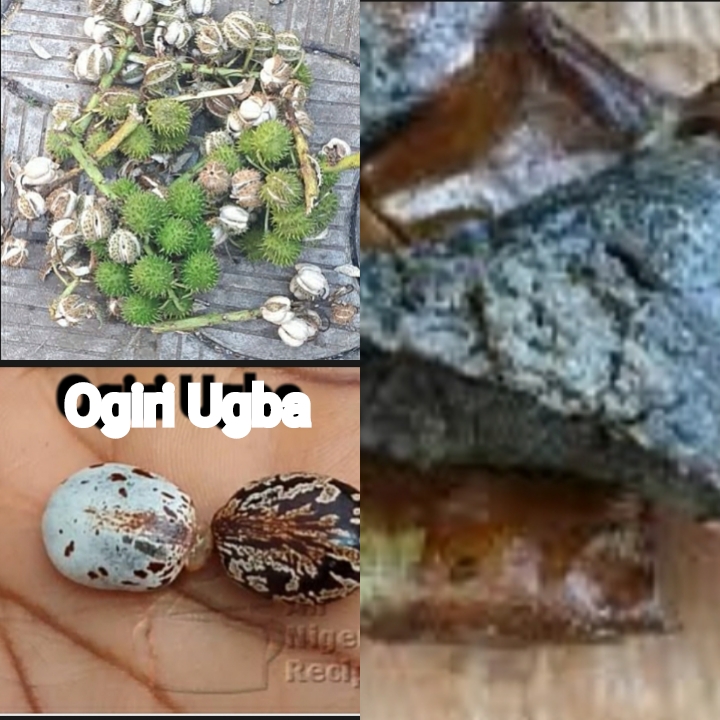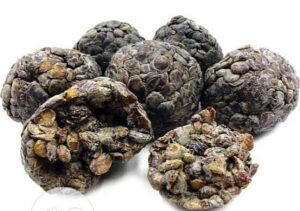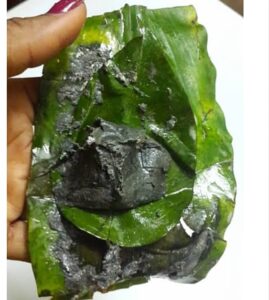Search Contents
How to Make Ogiri Ugba – from Expert
Ogiri or fermented local condiments is the major condiment for cooking some dishes. Soups like; ora or oha, bitter leaf, nsala are not complete if this local condiment is added to them. In this post, you will learn how to make original ogiri ugba from an expert.
But before we proceed, I will like to draw a curtain here on the types of ogiri. There are types of ogiri although they all serve a similar purpose. The only difference is the type of seeds they are made from.
We have ogiri ugba; we also have ogiri egusi and the rest of them. In our previous post, we have discussed ogiri egusi or melon seeds and how to process them at home. Read it here.
The general name for ogiri, no matter the type of the seed it is made of is‘Condiments of Fermented seeds. However, when you want o address them separately like ogiri egusi, you can call it ‘Fermented condiments from melon’.
So, when next someone asks you the English name for Ogiri, just say condiments of fermented seeds. You can then add the name of the seed if you know the type of seed the ogiri is made from.
Ogiri Egusi or Uri as people call it is an age-long condiment for local meals like Soup for Swallow like Ofe Ora, Bitter leaf soup, Nsala Soup, Ofe Ugu, etc. This local condiment is known for its heavy smell.
However, the smell and the taste is part of the reason why it is needed in the first place. A typical home-grown Igbo lady knows that these meals mentioned are not complete if they are not prepared with Ogiri Igbo.
As I said earlier, It is equally used by some people to prepare sauces for Ngwongwo, nkwobi, ngba ncha, abacha sauce, and ugba.
However, Melon seed is not the only seed used in processing Ogiri. Castor Oil or sesame seed known as Ugba or oil beans, and African Mesquites Seeds are among the seeds used in processing or producing Ogiri Igbo.
How to Make Ogiri Ugba – from Expert

Ugba seed is a type of oil-seed with a hard shell. And just like melon seeds, it needs to be peeled. The difference between Ugba and melon is that the shell is hard and stronger than that of melon.
You can use your fingers to peel off the shell of melon but not with sesame or castor oil seed. It needs to be cracked just like palm kernel.
In the time past, ugba seeds are cracked with with a stone. No matter the quantity, it will be cracked one after another. Most times, it took days for the cracking to be completed.
Few seeds were poured on the hard floor and small-sized stone was used to crack them open. But that is not the case now.
Machines that crack or peel these seeds have been invented. These machines encourage the large crackings and separations of the seeds. You just need to take your seeds to the cracking machine and that is all.
Steps in making Original Ogiri Ugba at Home
Step 1.
Making or processing original ogiri ugba from home is simpler than making ogiri egusi Igbo. There are too many processes in making ogiri melon seed.
In ogiri ugba, you will have to remove the hard shells, either by cracking with stone or by taking to the machine for cracking. Then, separate the shells and gather the white seeds.
Sesame seeds of Castor oil seeds when cracked, show pure white inner seeds. These white inner seeds are known as meat.
Step 2.
After gathering the white inner seeds, cut plantain or banana leaves and smoke the leaves on the tongue of flames or burning coal. The essence of burning or smoking it is to make the leaves to be able to hold or wrap anything without shredding.
Then, form a wrap with the leaves and pour all the white inner ugba seeds in it or part. You can make it double wraps or more, depending on the quantity of the seeds.
Step 3.
Tie rope around the leaves to make it hold properly. Use a knife-fork or a sharp stick to make tiny holes on all the bodies of the wrap. This is to help water penetrate inside the seeds while cooking.
Pour enough quantity of water in the pot and put the wrapped seeds inside it. Put fire and boil for like 5 hours.
It is advisable to use firewood or charcoal in boiling ogiri. But if you are equal to the task, you can use gas cooker.
However, you may need to add water even up to three times if the first water is dried. Boil the seed until it softens and turns into brown. At this time, you should notice brown oil dripping out from the wrap’s openings.
Step 4.
Bring out the wrapped seeds and put in a dry basin or pot to cool. After, put it in a sack bag and keep anywhere, preferably, in the kitchen.
Leave the wrap in the bag for 4 to 5 days. By this time, it has fermeted. This is how it should look like when you bring it out and open the wrap after 4 or 5 days.

Step 5.
Put the fermented ugba seed inside a mortar and pound. Pound untill it becomes smooth and turns to paste. That is your original ogiri ugba.
Meanwhile, most people don’t cook with it even at this stage. They still keep it for more days to ferment the more. The more it ferments, the thicker and heavier the taste in the soup and other dishes.


How to preserve Ogiri Ugba
You must not look for leaves to tie your ogiri. There are other simple methods to preserve it.
You can make use of small cups with tight lids. You can also use a bigger bottle as long as it has a tight lid or cover. I also know a friend who puts hers in a plastic plate and covers it.
She puts it inside a freezer to block, once it has fermeted the way she prefers it. One thing you should know about ogiri is that, if you don’t preserve it well, it will spoil. That is, instead of fermenting, it will become rotten and contaminated.
Thanks for reading. Please,subscribe to our notification and share the post with your friends.



